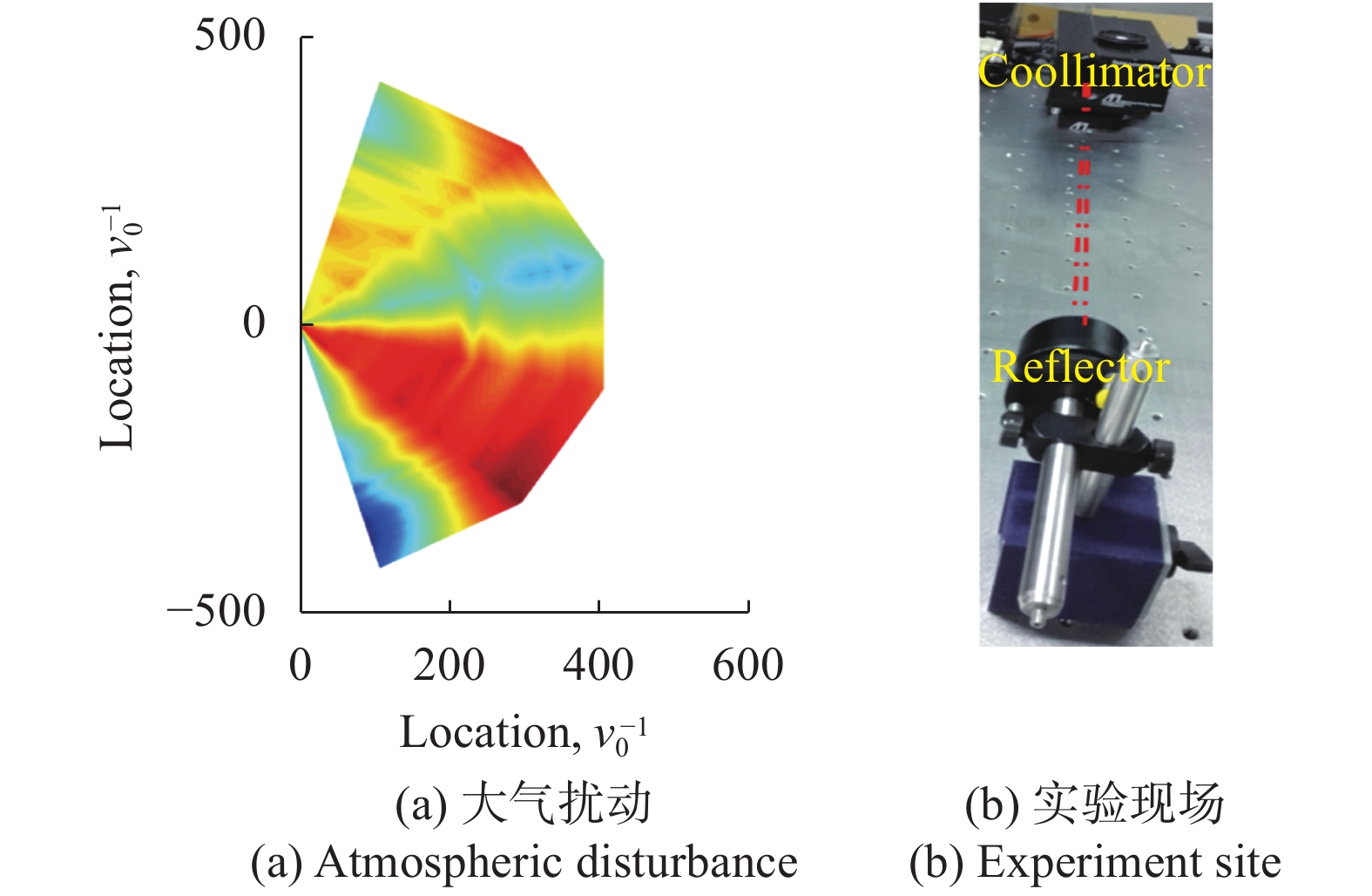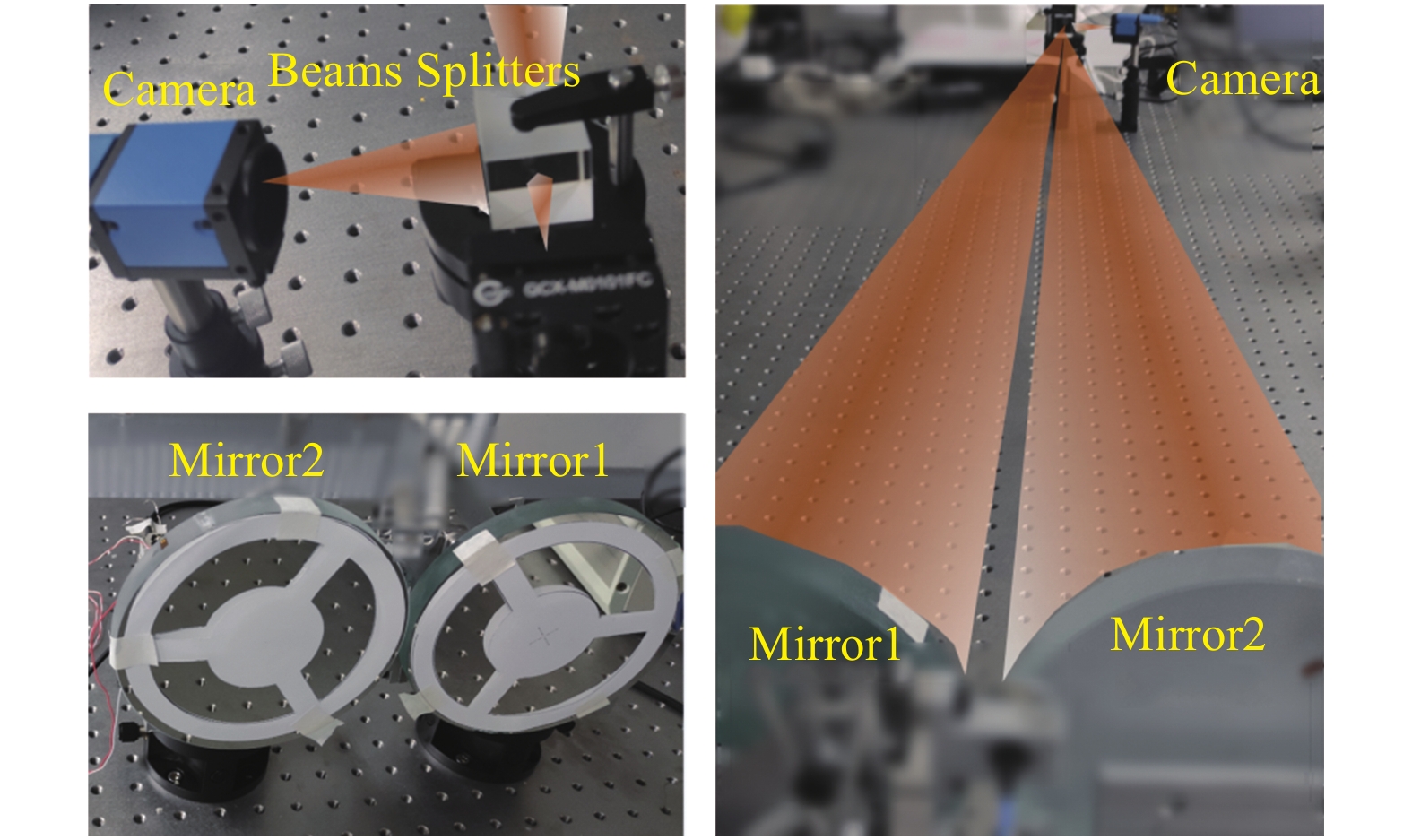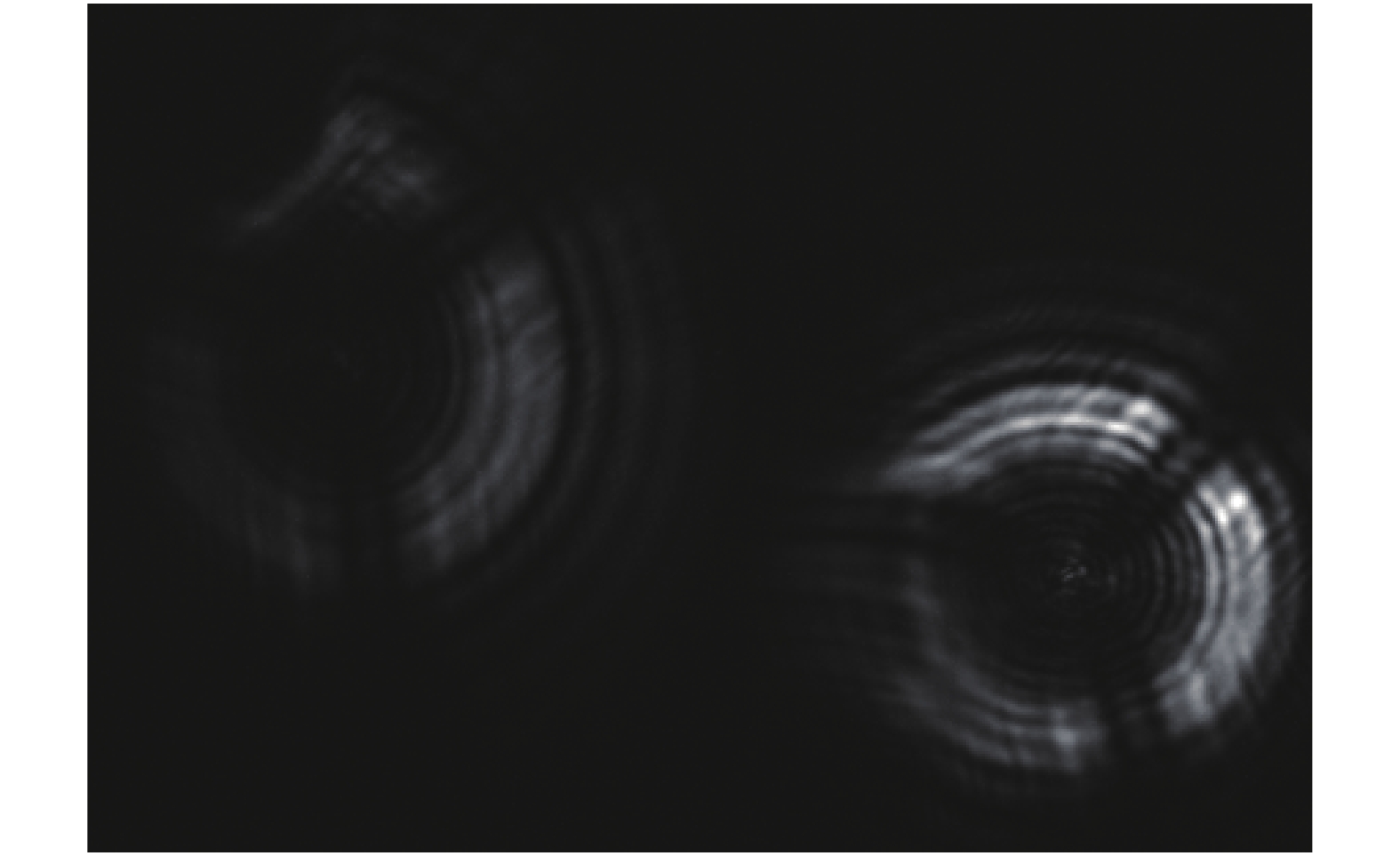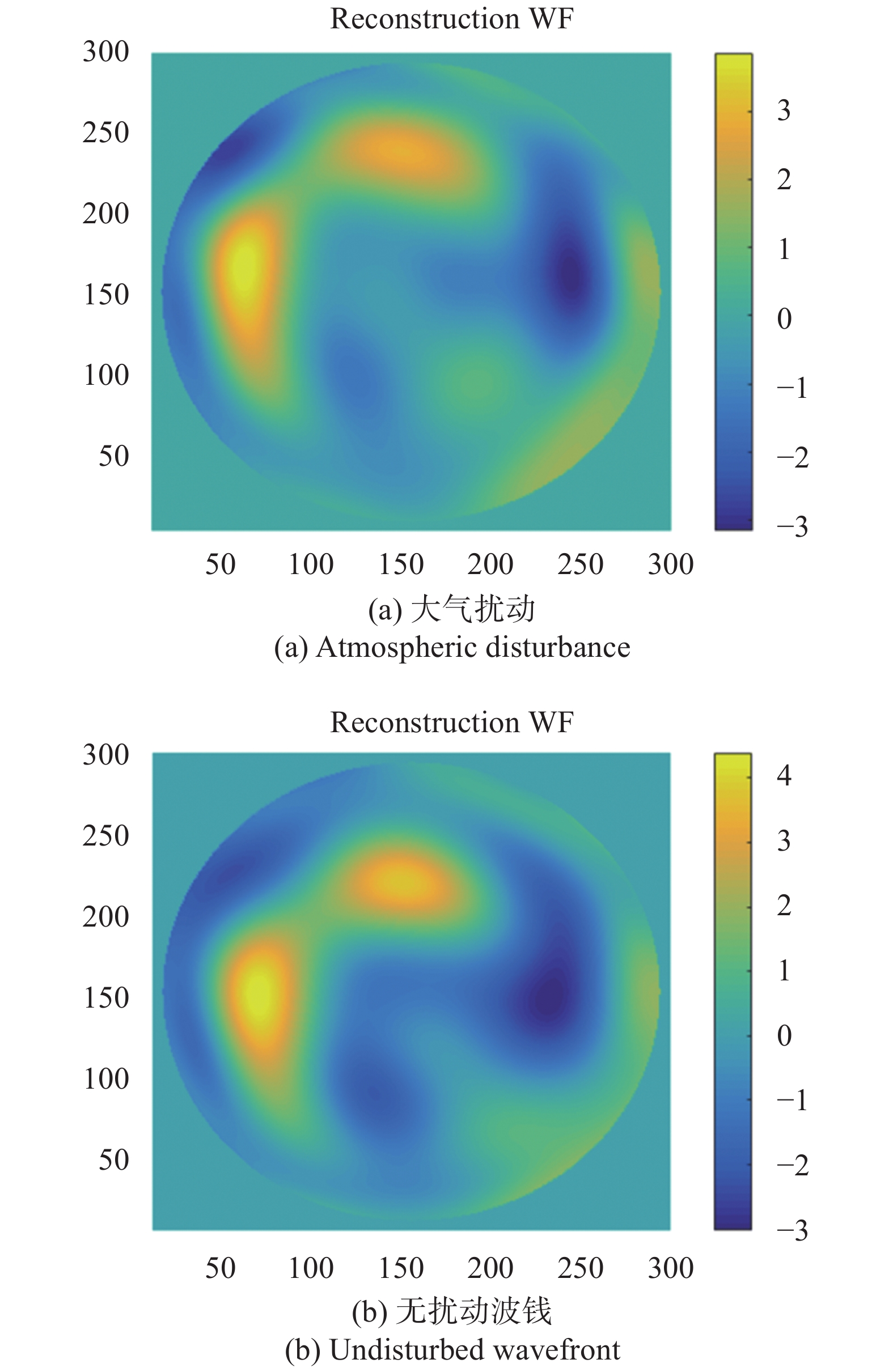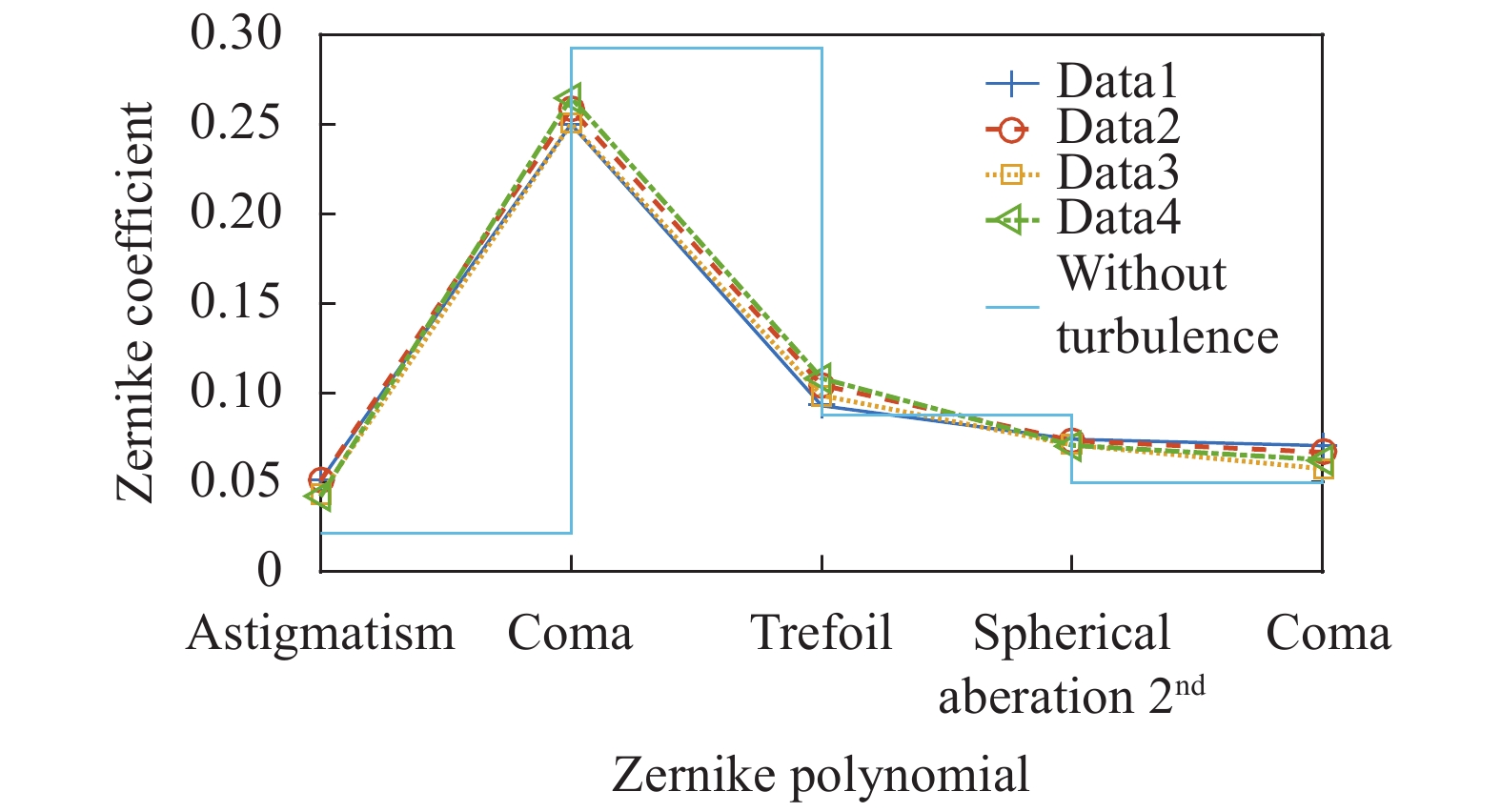-
为了对更加深远的宇宙进行探索,进一步围绕宇宙起源、暗物质暗能量等科学目标开展相关研究,需要加大望远镜的口径,以获得更高的分辨率与灵敏度。传统的望远镜口径较小,其光学元件尺度小于大气相干长度,因此很少考虑由于大气湍流影响所引起像质的损失,尤其是在加工检测过程中的气流影响往往容易被忽略。但是,随着光学系统口径的增加,镜面附近湍流影响已经越来越不可忽略。单纯依靠多次测量平均所获得的测量结果,不仅在效率上难以保证,同时,由于测量环境难以满足严格的各向同性,平均的结果可能存在一定的统计学偏置,不仅会影响光学表面散射特性,严重时甚至会造成光学加工不收敛。不仅如此,对于下一代地基大口径望远镜,其口径将会超过30 m,以美国的30 m望远镜为例,为了充分利用望远镜的集光能力,在光学平台上配备了诸多科学终端,系统所收集的光线在中继至对应终端的过程中,主镜镜面附近的大气会对光线发生偏折,进而影响光线中继的质量。
目前,国内外诸多学者已针对高层大气与圆顶内部湍流所引入光程差展开了诸多相关研究[1-3],而由于镜面局部热不均匀性所引入“镜面视宁度”却缺少相关的分析手段,不仅如此,与镜面视宁度类似,系统终端附近也会产生类似的相位扰动。
与高层大气所引入的波前误差相比,镜面视宁度受边界条件影响较大,无法很好地通过统计学模型进行描述[4~6]。镜面视宁度检测主要可以分为直接检测、间接估计以及数值仿真三个技术流派。具体来说:在计算仿真方面,Xia等[7]针对太阳望远镜观测阶段的镜面湍流情况,采用流仿真软件对镜面视宁度进行了分析,从数值计算的角度验证了强迫对流对镜面视宁度的显著提升作用。基于同样流体力学的原理,Zhang等[8]也利用仿真软件对镜面视宁度对成像探测的影响进行了分析。但是,使用流体仿真分析法[9]对于模型的精确程度与计算机算力均有着较高的要求。因此,为了获得与实际边界更接近的结果,多使用在线实际检测。Iye.M等针对620 mm的反射镜面,采用哈特曼波前传感器测量了镜面附近的湍流情况与周围空气温差的关系[10~12]。Melisa Tallis等[13]利用GIMINI south的科学终端实现了镜面视宁度的测量,分析了镜面视宁度对高度比度的系外行星观测的影响。除使用成像终端进行测量外,镜面视宁度也可以通过温度数据进行间接估计[11],即通过光学元件背部附加的温度传感器建立温差数据与镜面视宁度之间的函数关系,进而对镜面视宁度进行估计。
对于镜面视宁度而言,其测量的难点与重点均在于与实际检测边界以及温度场之间的交互与耦合,因此,针对镜面视宁度,采用直接测量是最为可行的方案。目前,镜面视宁度直接检测多采用干涉仪[14]或焦面探测部件[15],但是以上两种技术路线均需要占用光学元件光轴方向的空间。在需要在线检测的场景,反复法如拆装迭代将会严重影响元件的加工周期。
针对以上情况,文中提出了一种基于曲率/斜率混合传感的镜面视宁度检测方法,基于“冷冻湍流”假设(大气湍流为固定分布的“相位屏”按照一定速度匀速前进),利用湍流的定向运动,通过孔径分时复用换取相当的空间分辨能力(可类比非快照系统)。基于测量所得到的斜率与曲率信号,不仅可以对镜面视宁度进行评价,而且可以结合横向风速对测量光路上的大气湍流情况进行重建。
-
在实际应用中,使用泽尼克(Zernike)多项式等圆域连续基底,不仅会出现非圆域正交性退化的问题,同时在离散取样时,其表征精度会出现相应的下降。在此选取傅里叶级数对波前进行表达,同时,由于傅里叶变换可以使用快速算法,其计算速度也可以大幅提高。
设最高的拟合阶数为N,将波前Φ(x, y)表示为离散傅里叶级数,如公式(1)所示:
式中:n、m为整数;x、y为离散空间坐标;
$\tilde \varPhi $ (n, m)为离散傅里叶级数系数。将公式(1)变形可得公式(2):将公式(1)两端进行梯度算子:
曲率传感器由Roddier于1988年提出[16],其基本原理是光瞳处波前局部的曲率变化,所对应的焦内像与焦外像的光强分布会发生对应的变化。根据近场电磁波的传输方程可以解算出波前信息,曲率传感因具有非干涉(无需参考光)、结构简单、环境适应性好、解算稳定(无需迭代)、孔径遮拦影响小以及动态范围大(无需相位解缠)等诸多独特优势,具有非常好的应用价值。
根据曲率传感基本原理,波前相位的曲率与光强沿光轴方向的差分成正比,如公式(4)所示:
式中:I1(x, y)、I2(x, y)为焦前焦后的能量分布;I0为光强总值;Δz为离焦量。结合公式(3)~(4)可得:
对公式(5)两端进行变形可得公式(6):
进而可得公式(7),通过公式(1)可得波前Φ(x, y):
类似地,可以建立
$\tilde \varPhi $ (n, m)与斜率S(x, y)的关系,如公式(8)所示: -
大口径光学元件系统性能评价和误差分配是一个复杂的系统工程,其涉及面广、环节众多、与实际应用需求联系极为紧密。误差分析、分配准则的研究本质上是建立大口径望远镜科学目标与望远镜实际性能指标之间的关系。不仅如此,性能评价和误差分配实际上是相互关联的,即误差分配本身是一个平衡过程:在既定的性能评价标准下,需要综合考虑系统误差的敏感性和实际加工、生产能力以及成本等因素,进而实现误差的分配。标准化点源敏感性(Point Source Sensitivity,PSSn)是点扩散函数在成像区域的平均[17-20]。PSSn的定义与计算方法如公式(9)所示:
式中:PSFe、PSFt+a为望远镜误差的点扩散函数以及理想望远镜在视宁影响下的点扩散函数;OTFe、OTFt+a为望远镜误差的光学传递函数以及理想望远镜在视宁影响下的光学传递函数;A(x, y)与A(fx, fy)为空间域与频域的积分区域。根据公式(1),可选择合适的方式计算PSSn。
Seo在2009年提出PSSn之后,TMT全频段的误差分配均使用PSSn进行表征。Angeli在2016年对LSST进行了系统级建模,利用PSSn分析了各个频段的误差[21]。Angeli在2018年利用PSSn对GMT自然视宁与地表自适应光学两种工作模式行了误差分配,引入进入大于1的PSSn,用于模拟自适应光学中频误差校正环节[22]。
-
对流方向模拟实际使用过程中的不同方向采样,并通过对自准直仪示数的直接分析定性地获得湍流强度,指导系统进行初步的温控与湍流调整,同时利用公式(5)也可以对镜面视宁进行初步计算,如图1所示。
为了兼顾测量动态范围以及测量精度,在此采用量级测量的策略,即采用动态范围较大的斜率测量对强湍流情况进行估计,之后采用曲率传感测策略对镜面视宁度进行更加精细与准确的测量。
在进行斜率探测后,通过自准直仪后端光路的调焦将系统进行一定量的离焦(两台自准直仪的离焦方向需要相反),并通过波前沿光轴方向的微分获得波前的估计。获得数据后,基于PSSn这一频域指标对结果进行表征与分析,以期更全面地理解镜面视宁度作用的内在物理机制与统计学特性,最终平衡镜面视宁度、光学误差以及加工成本之间的关系。由于斜率测量采用大像元尺寸(提高读出速度与读出噪声),当其测量值接近其测角精度时,说明热控系统已经抑制部分湍流,在此情况下可切换曲率传感。
具体来说,采用系统测量分为两级,分别是大范围的斜率测量以及小量程高精度的曲率测量。由于斜率探测仅需要几个像元,动态范围较大,因此作为初始阶段的镜面视宁度检测手段。
在镜面视宁度精确测量中,曲率传感因具有非干涉(无需参考光)、结构简单、环境适应性好、解算稳定(无需迭代)、孔径遮拦影响小以及动态范围大(无需相位解缠)等诸多独特优势,具有非常好的应用价值。但高精度的离焦器件系统限制了其应用的场景,在此采用分体球面镜实现固定的离焦量,并最终实现单次曝光测量的小型化、静态化的镜面视宁度测量仪。
-
在实际的检测过程中,使用极坐标的便利程度远远超过了直角坐标,在此研究了基于极坐标的镜面视宁度检测方法,通过额定160 W的设备,配合风扇进行镜面视宁模拟,其检测结果如图2所示。
为了对镜面视宁度进行更为精确的解算,在斜率测量的基础上需要利用曲率传感进行测量。曲率传感器所对应的焦内像与焦外像的光强分布会发生对应的变化[23]。在此,采用通过固定部件(错位球面镜)分视场单次曝光获取离焦像的物理架构,模拟实际过程中的曲率传感过程,并根据近场电磁波的传输方程解算出波前信息。采用的球面镜F数为10,在此忽略由于光束数值孔径所引入的误差,曲率传感实验示意图如图3所示,曲率传感实验现场如图4~5所示,曲率传感实验结果如图6所示。实验的目的在于分析望远镜镜面视宁的测量方法以及气流运动对成像效果与波前探测的关系,面向实际的系统,可以将该实验装置与实际光路进行耦合(可采用共路或垂直光路安放),对瞬时的局部视宁度进行测量,在与相机的采样保持同步的基础上,可以挑选视宁度影响较小的短曝光图像,并在后续的计算过程中针对筛选过的图像进行平均等后续处理,可从探测机理上提升主动光学系统精度溯源的能力。在此情况下,错位型曲率传感器单次曝光的优势更加凸显。
波前传感所对应的各个Zernike多项式系数如图7所示。将视宁度的影响限制在低阶部分,一方面考虑由于镜面局部热不平衡带来的影响在空间频率上较由于多层大气所引入的大气视宁度低,另一方面,考虑到主动校正系统主要针对低阶像差的因素。可见,由于强迫对流的影响,各个空间频率的像差均发生了改变,但是较低阶的影响要更加明显。冷冻湍流假设认为在采样率足够的情况下,大气湍流为固定分布的“相位屏”按照一定速度匀速前进,在固定口径中,通过足够长时间的积分可获得接近高斯分布的相位分布,基于该假设在大多数情况下可实现大气扰动的估计,如果进行更高精度的波前传感,一般来说需要更长的积分时间。但是积分时间是涉及系统带宽、控制残差以及观测效率等多个系统关键参数的物理量,难以无限增加。该设备可在不依靠大量数据的前提下体现湍流本身的统计学特性,通过假设检验对所采数据的波前进行分析,从探测机理上提高面对非平稳过程的鲁棒性。
在静态测量的基础上进行动态测量,镜面视宁度动态测量如图8所示。考虑对镜面视宁度进行动态采集,并在50 s前对湍流源进行了方向上的微动,使气流更加均匀,在50 s后仅进行静态的强迫对流,系统的镜面视宁度进一步下降。之前的研究充分肯定了强迫对流方法对镜面视宁度的提升效果,在此,针对强迫对流的稳定性与镜面视宁度之间的关系进行了研究。可见,均匀且各项同性的流场对于波前检测过程的影响较小,由于湍流不稳定所引入PSSn为0.9718,对望远镜观测跟踪中的镜面视宁度控制具有非常好的指导作用。
-
近年来,大口径望远镜的发展几乎主要集中于克服大气所带来的影响。镜面视宁度是大口径光学元件在制造、检测、装调过程中都十分重要的影响因素。
因此,文中提出基于曲率/斜率混合传感的镜面视宁度检测方法,结合标准化点源敏感性,不仅可以在加工检测的过程中对镜面视宁度静态分布与动态变化进行有效的测量、评价,而且可以在横向风边界条件下对路线上的大气湍流的空间分布情况进行反演,实现非充分曝光下的大气湍流影响解耦,即在大气扰动没有被完全平均的情况下实现高精度波前传感。
不仅如此,针对主动光学系统波前传感系统局部的大气扰动,也可以在不附加其他硬件的情况下,通过该方法进行气流影响解耦。与传统的利用热控系统进行控制的方法相比,成本更低,适用更强,对于物理空间难以排布主动热控系统的米级口径望远镜具有十分良好的应用场景。
Detection method of mirror seeing based on curvature/ slope hybrid sensing
doi: 10.3788/IRLA20200419
- Received Date: 2020-10-17
- Rev Recd Date: 2021-01-07
- Publish Date: 2021-07-25
-
Key words:
- large optics system /
- mirror seeing /
- curvature sensing /
- wavefront slope
Abstract: With the increase of aperture of optical elements, the influence of mirror seeing has become more and more difficult to ignore in the process of processing inspection and observation. For strong turbulence, slope detection is used to qualitatively analyze low order components. After the airflow is stable, curvature sensor can be used for fine measurement. After the slope detection, the back-end optical path of the autocollimator can be focused, and the system can be defocused to a certain amount (the defocusing direction of the two autocollimators is opposite), that is, the estimation of wavefront curvature can be obtained by the differential of wavefront along the optical axis. After obtaining the data, the results can be statistically analyzed based on point source sensitivity (PSSn) theory. Firstly, the basic method of curvature/slope hybrid sensing was deduced theoretically. The normalized PSSn was proposed by the US 30-meter telescope (TMT) to evaluate the overall performance, shape and distribution of systematic error and the change of mirror tranquility in the detection process were further analyzed with the PSSn as the evaluation index, the PSSn introduced by turbulence is 0.9718. The experimental results show that when the thermal disturbance flow field is relatively uniform, the influence of specular visibility on the flow field changes little with repeated changes. The work can quantitatively analyze the specular visibility of large-aperture optical elements, which is of great guiding significance for the optimization of large-aperture system design and detection processing.














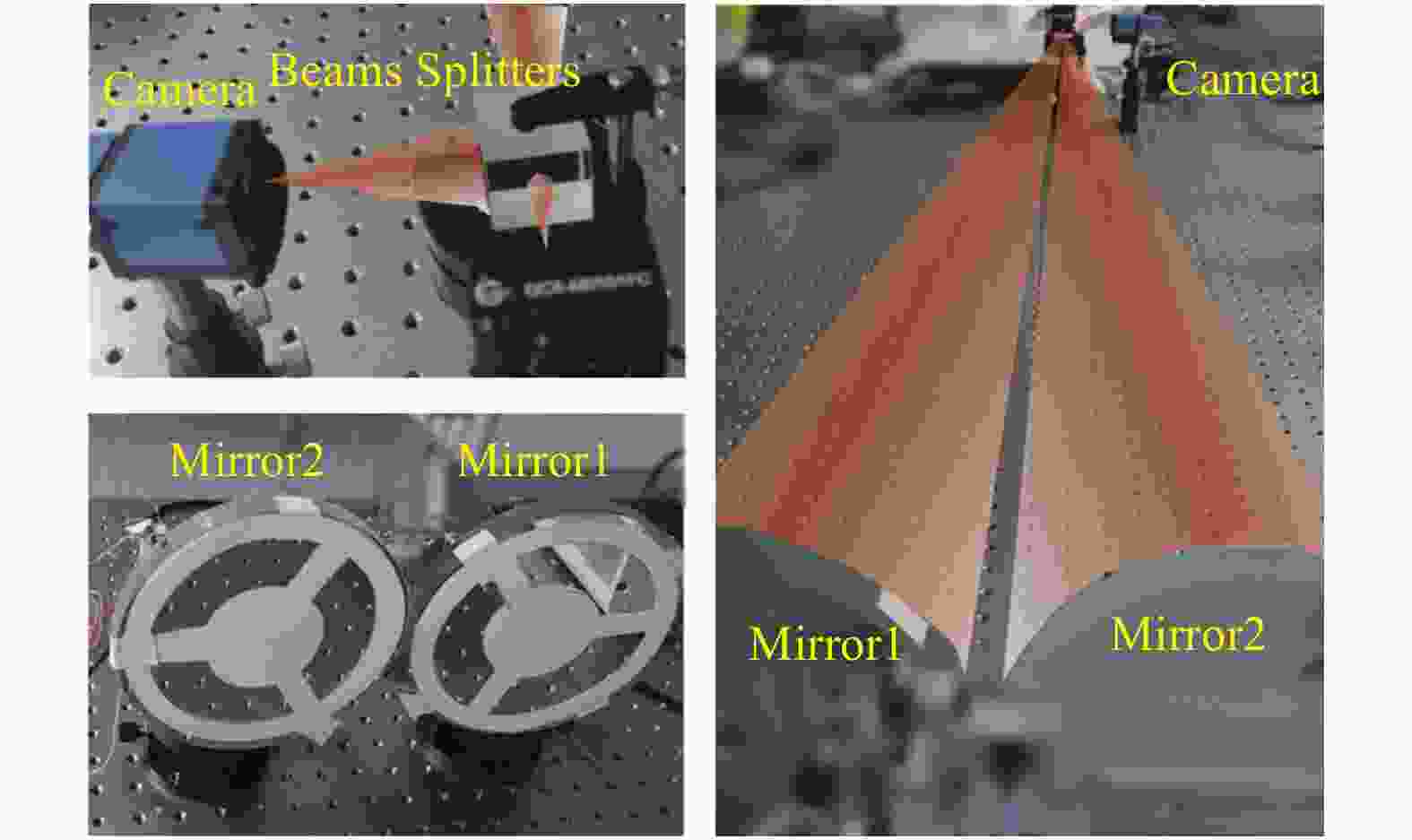
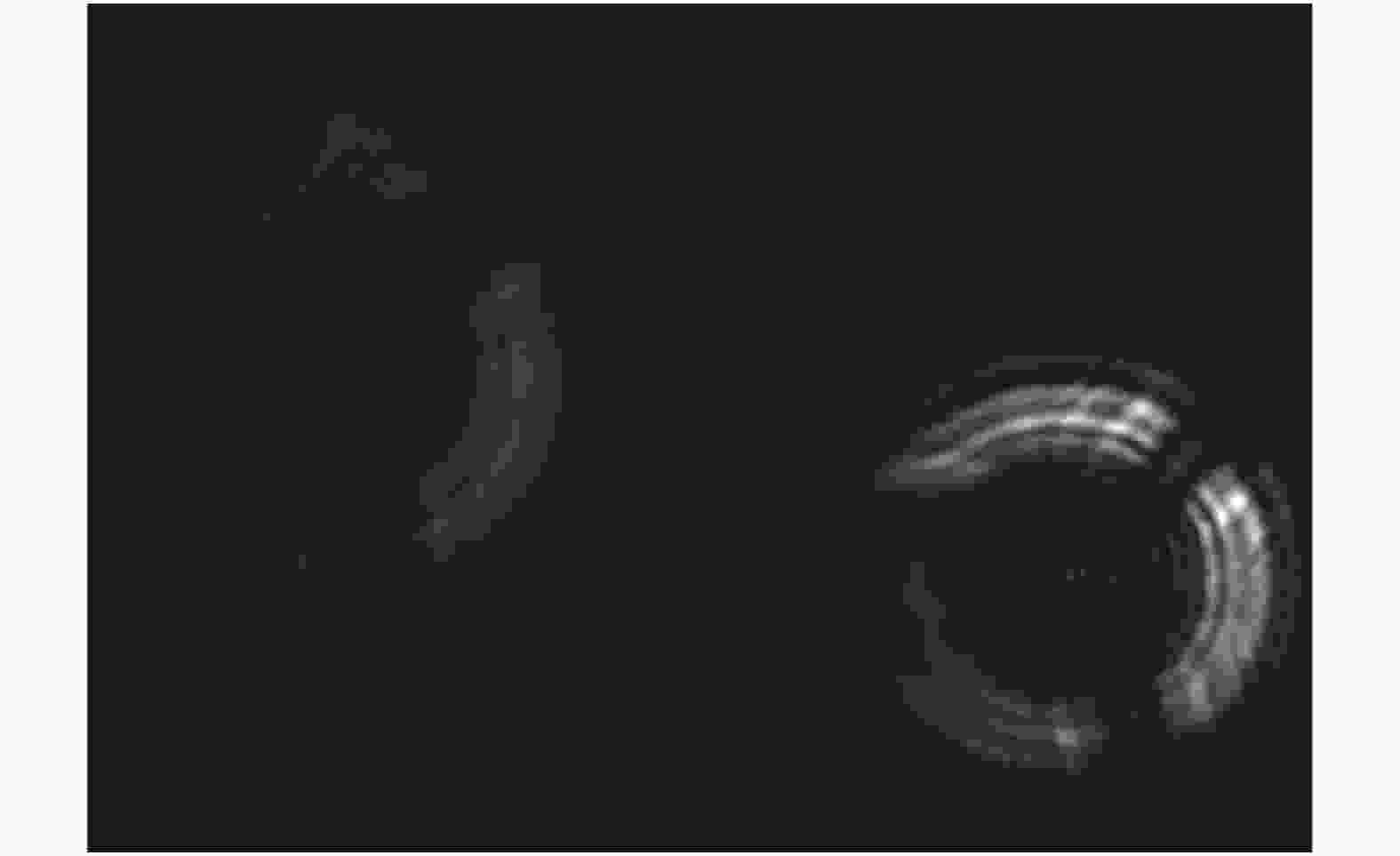
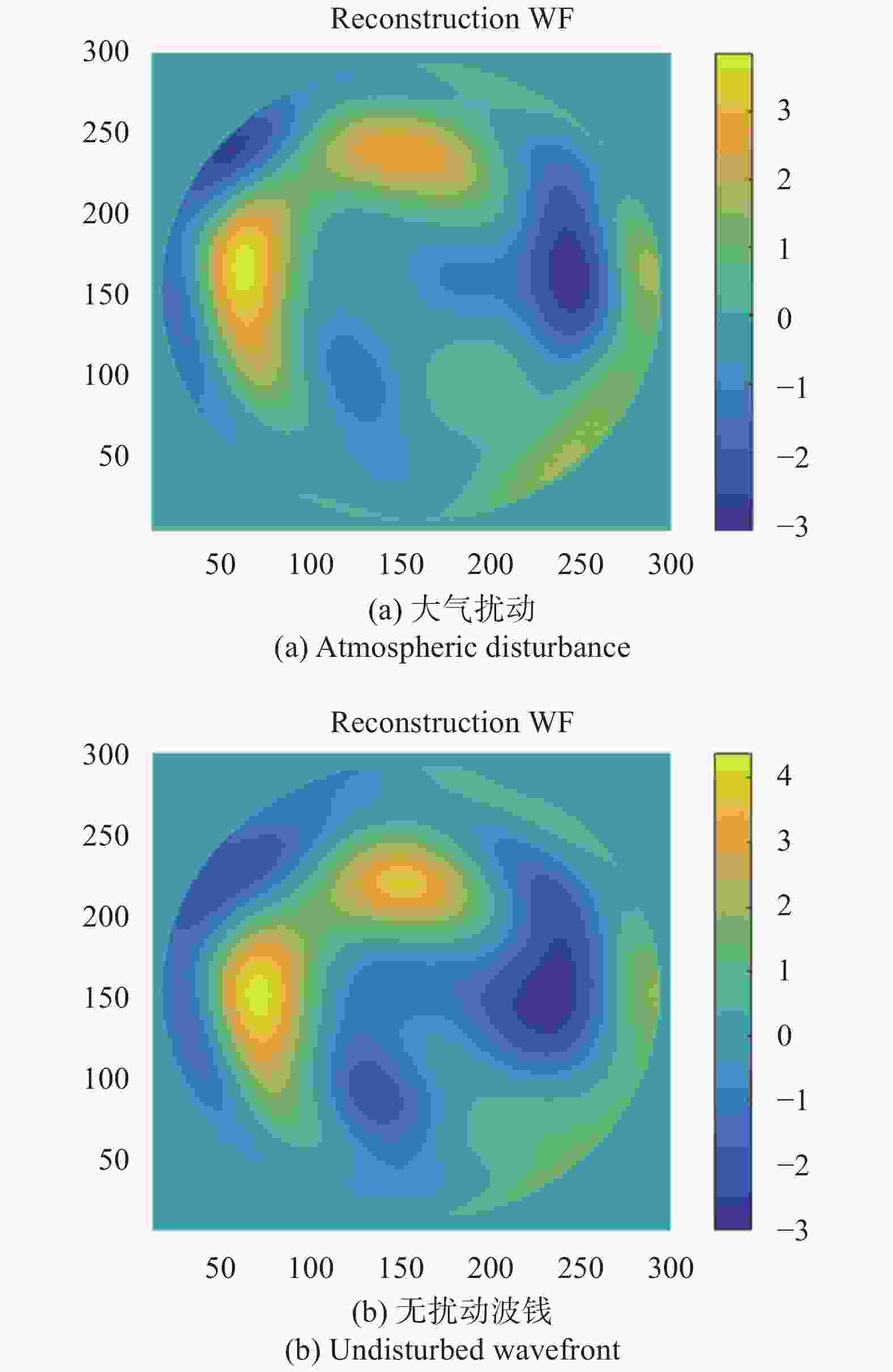

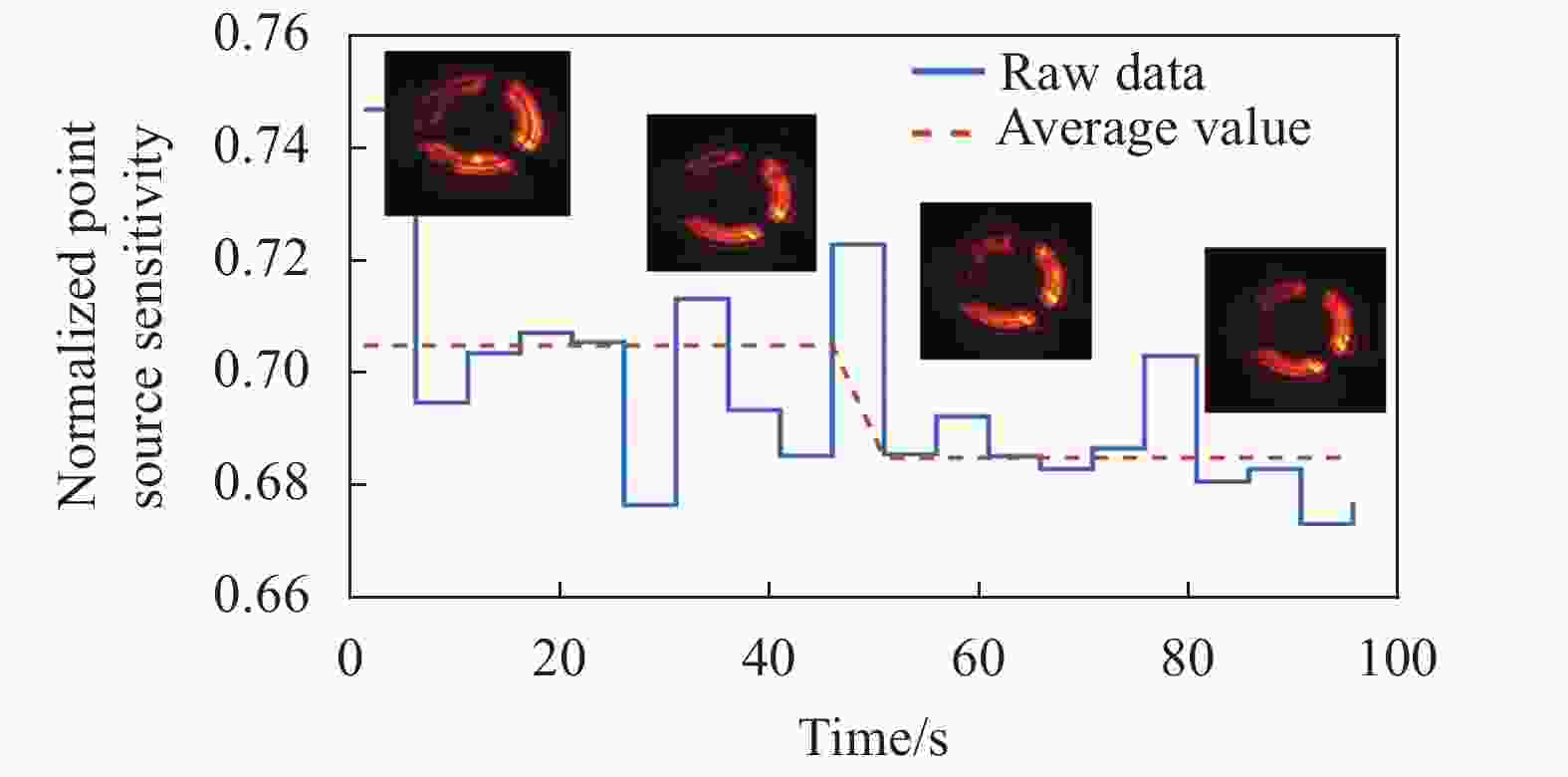

 DownLoad:
DownLoad:
